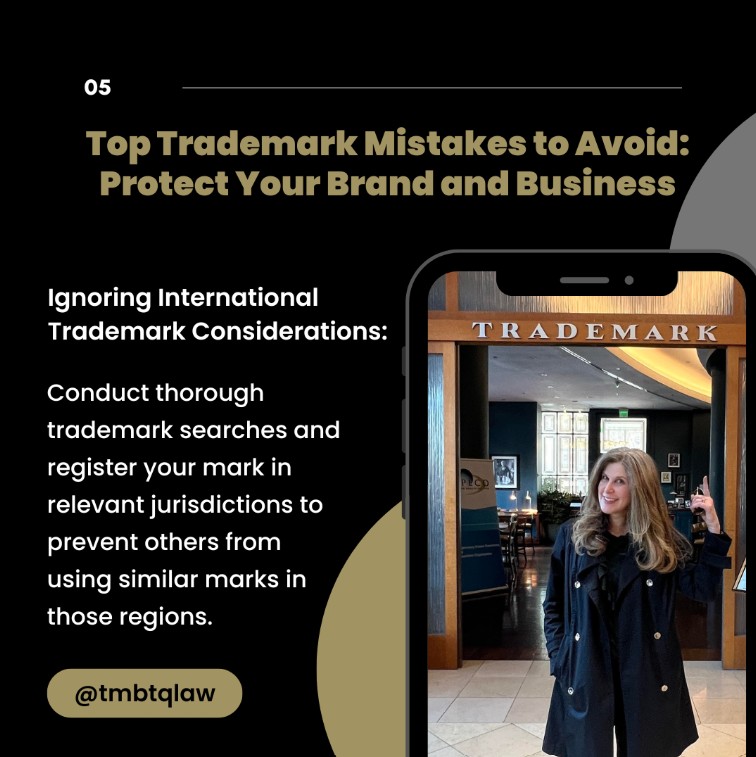
Strong and recognizable brands carry immense value. If you’re a mid-market retail manufacturer, your brand is often the company’s most powerful asset – one that can set you apart from competitors and drive customer loyalty. To harness the full potential of your brand, it’s crucial to understand the importance of how to build and effectively manage a trademark portfolio. In this blog post, we provide an overview on developing a comprehensive trademark portfolio to support brand growth and protection.
Understanding the Basics: What Is a Trademark Portfolio?
A trademark portfolio consists of a collection of trademarks associated with your brand. This can include the company name as well as logos, slogans, the names of products or signature services, and other distinctive identifiers. These trademarks serve as your brand’s intellectual property: they protect your unique identity and, if properly secured, may prevent others from using confusingly similar marks. Building a strong trademark portfolio is not just about filing trademark applications with the U.S. Patent and Trademark Office (or foreign equivalents); it’s about creating a valuable asset that can support your business in various ways.
Building Your Trademark Portfolio
- Identify Your Brand Elements: Start by identifying all the elements of your brand that deserve trademark protection. This includes your company name, product, collection, or service names, logos, taglines, and even distinctive colors, smells, or product packaging.
- Conduct a Trademark Search: Before filing any trademarks, conduct a thorough search to ensure that the potential marks are available for use as well as registration with the U.S. Patent and Trademark Office. This step is crucial to avoid potential legal conflicts down the road. You (or your lawyer) should look through USPTO records not only for exact matches, but also for visually or phonetically similar marks for similar or related goods or services, as well as Secretary of State records, social media, D&B records, and general internet search. You should have a good idea of availability after conducting this comprehensive search.
- Filing Trademarks: Once you’ve selected your trademarks, file for trademark registration with the relevant government authorities. A registered and well-enforced trademark can provide you with exclusive rights to use your marks in connection with your products or services.
- Global Considerations: If you plan to expand internationally, consider registering your trademarks in other countries to protect your brand on a global scale. International trademark protection is vital as your brand gains recognition beyond your home market.
Managing Your Trademark Portfolio
- Regular Monitoring: It’s not enough to secure trademark registrations; you must also actively monitor your trademarks. Regularly check for any potential infringement or unauthorized use of your marks, and take swift legal action when necessary.
- Renewal and Maintenance: Trademarks have expiration dates, and they require periodic renewals to maintain protection. You or your trademark lawyer should keep track of these renewal dates to ensure that your trademarks remain in force.
- Leveraging Your Brand: A trademark portfolio isn’t just a defensive tool; it’s an asset that can be leveraged for business growth. Licensing your trademarks to others or entering into co-branding partnerships can generate additional revenue streams. Just make sure that you maintain quality control!
- Protecting Your Reputation: Trademarks also play a crucial role in protecting your brand’s reputation. They help prevent counterfeit products from entering the market and ensure that customers can trust the quality and authenticity of your goods.
The Value of an Ongoing Investment
Investing in your trademark portfolio is an ongoing commitment. It should be viewed not as a one-time task, but rather as a strategic effort to safeguard and enhance your brand’s value. By consistently building, monitoring, and managing your trademark portfolio, you’re ensuring that your brand remains a powerful asset that supports your business’s growth and longevity.
Your brand is a vital part of your business, and protecting it through a comprehensive trademark portfolio is essential. Building and managing your trademark portfolio effectively means that you are investing in your brand’s future success. A strong trademark portfolio can safeguard your brand, help you grow, and ensure that your customers can always identify and trust your products. So, whether you’re a CEO, President, or owner of a mid-market retail manufacturing company, take the time to understand the value of trademarks and make them an integral part of your business strategy. Your brand’s greatest assets deserve nothing less.
If you’re interested in learning more about how to leverage a good trademark strategy, let us know and we’ll be happy to chat.



